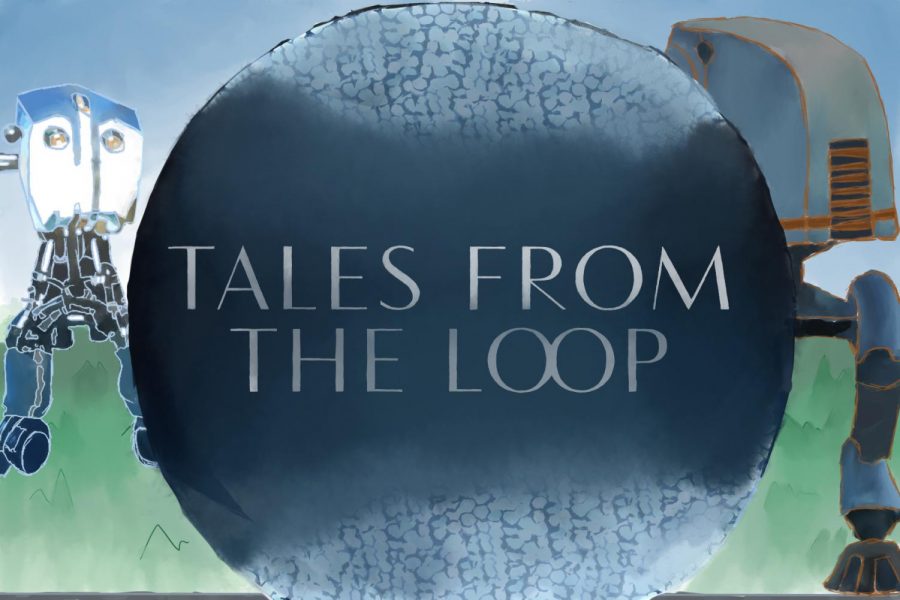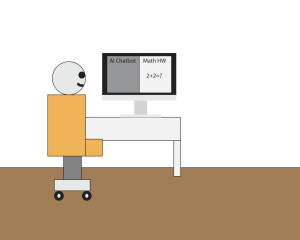Tales From the Loop
Tales From the Loop is a promising character drama with a sci-fi twist—mysterious, borderline magical technology functions in-universe to test the boundaries of human relationships.
April 28, 2020
Tales From the Loop is a promising character drama with a sci-fi twist—mysterious, borderline magical technology functions in-universe to test the boundaries of human relationships.
Based on a series of paintings by Simon Stålenhag from 2014, the series follows a small, Ohio town centered around an unexplained underground facility called the Loop. Each of the eight episodes have a runtime of around 50 minutes.
The episodes follow a new character, focused primarily on the Alvarez family members, but also diverging to various other people. The storylines introduce futuristic machines which appeal to the main character of the episode, whisking them into the fulfillment of their greatest desire. Alas, in typical sci-fi fashion, things go awry not because of the tech itself but because of the faults that lie in human behavior.
This concept might sound familiar, but it’s easily differentiable from it’s inspirations like the Twilight Zone or Black Mirror. Tales from the Loop is much more sentimental, and instead of assessing grandiose nuances of human morality, it’s an intimate study of interpersonal connections. In essence, it explores the limits and depth of love through new-found technology, presenting grounded struggles where the perspectives on what “love” means is challenged.
Each protagonist expands on the contemplative tone of the show. With the majority of them as children or teens, they have to come to terms with their idealistic expectations of the world. They’re forced to abandon the quick-fix technology when it disappoints any fantasy they’ve created, and each aspect of their desires crumble beneath the truth of their environment.
A common thread of the protagonists is also parent and child relationships. While not always at the forefront of the conflicts, there are subtle efforts to reconcile parental viewpoints which affects the protagonists’ internal struggles.
Atmosphere is also equally as relevant in distinguishing this show from its counterparts. Tales From the Loop is much more intimate and self-aware in its presentation. Each scene tends to feature only two or three characters with long, stilted pauses between dialogue and thoughtful scene composition that takes its time. Quiet, lingering shots on objects or actors allows the world to be soaked in by the watcher.
Thus, the lack of action allows the actors to shine. While most of the focus is put on the children of the show, there’s no noticeable bad acting. There’s some particularly exceptional acting in Episode Four, the chemistry between Russ (Jonathan Pryce) and Cole (Duncan Joiner) undeniable. Also notable is the taut mother-daughter pair in Episode Two, and the siblings of Episode Six.
The conflicts also explore different human emotions as well as questions over how people would use god-like technology. From time machines to switching bodies to freezing time, the traditionally envied “super powers” are strained with a new layer of human depth when applied to the complexity of power dynamics.
Conflicts are almost always set-up as an initial hope for the world, a “saving” piece of technology which indulges in that belief, and the underwhelming outcome. While formulaic in nature, this doesn’t mean the show’s predictable; on the contrary, the plot can take an unexpected direction and leave a bittersweet ending which adds a new layer to the puzzle.
The soundtrack supports the methodical setting with soft piano pieces and quiet instrumentals that accompany emotional moments. The cinematography also highlights gorgeous, scenic shots of nature. The rural setting and 1980s time period allows for the entwinement of the natural world and futuristic technology. Each futuristic mechanism is first discovered as rusted and dilapidated, far from human presence, and unlike most science fiction works, it doesn’t position the environment and human advancement against one another but celebrates their capacity for harmony.
The show isn’t focused on explaining the technology or where it comes from. While there is a vague advancement of the underground Loop facility, it’s never explained what the Loop is or why it exists. Instead, it’s left up to the imagination since all the characters accept whatever strange machinery they stumble upon. Ultimately, the mysticism keeps focus away from science and looming threats of too-powerful technology, and keeps interpersonal conflicts starkly in focus.
Tales From the Loop is a unique, one-of-a-kind slow-burn drama. For any sci-fi fans, it’s a must watch. This modern-take on the Twilight Zone never uses the technology as a modicum to advance the plot, but an extension of the very being of its characters—assessing the power of love, happiness, family, and friendship.










